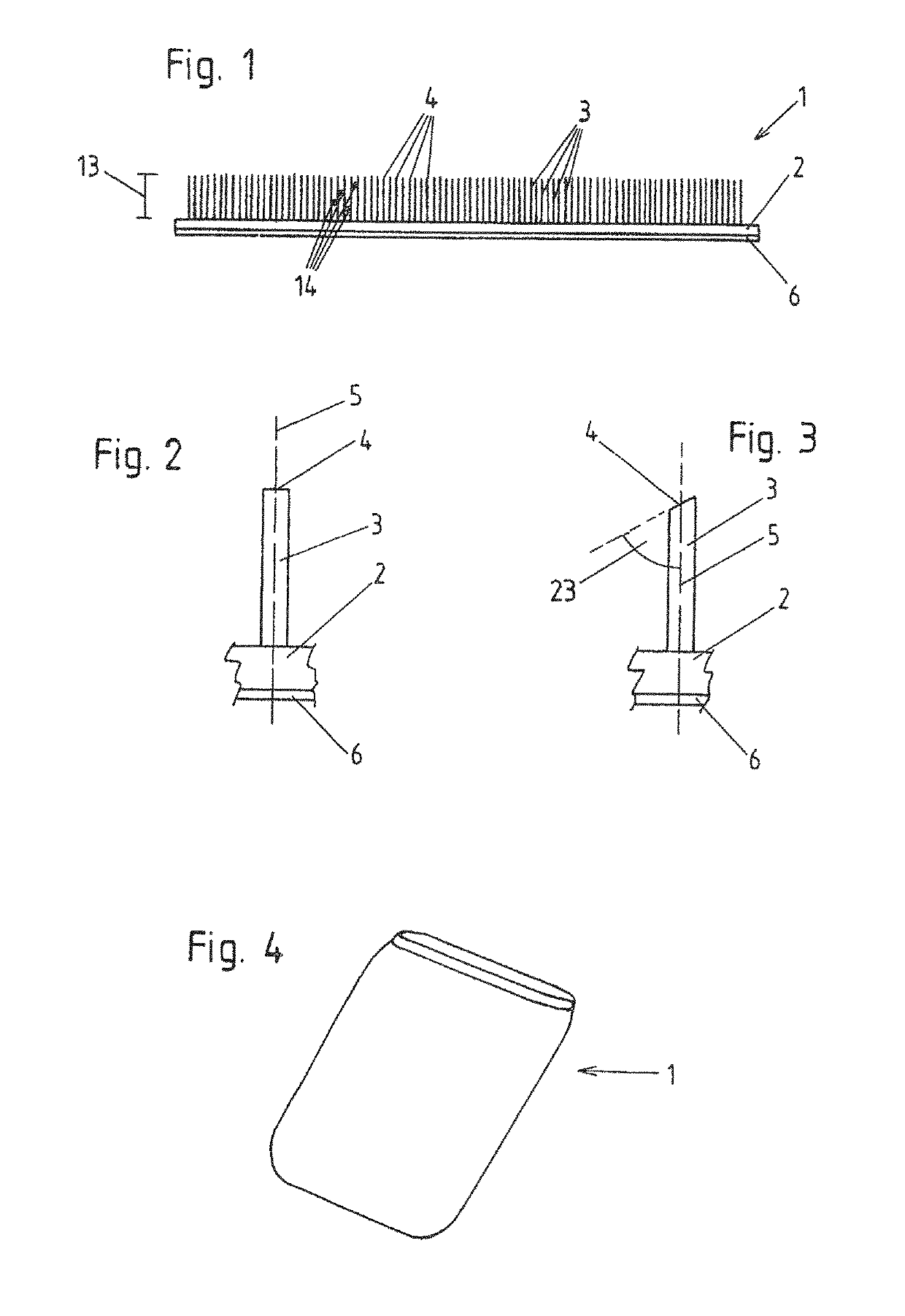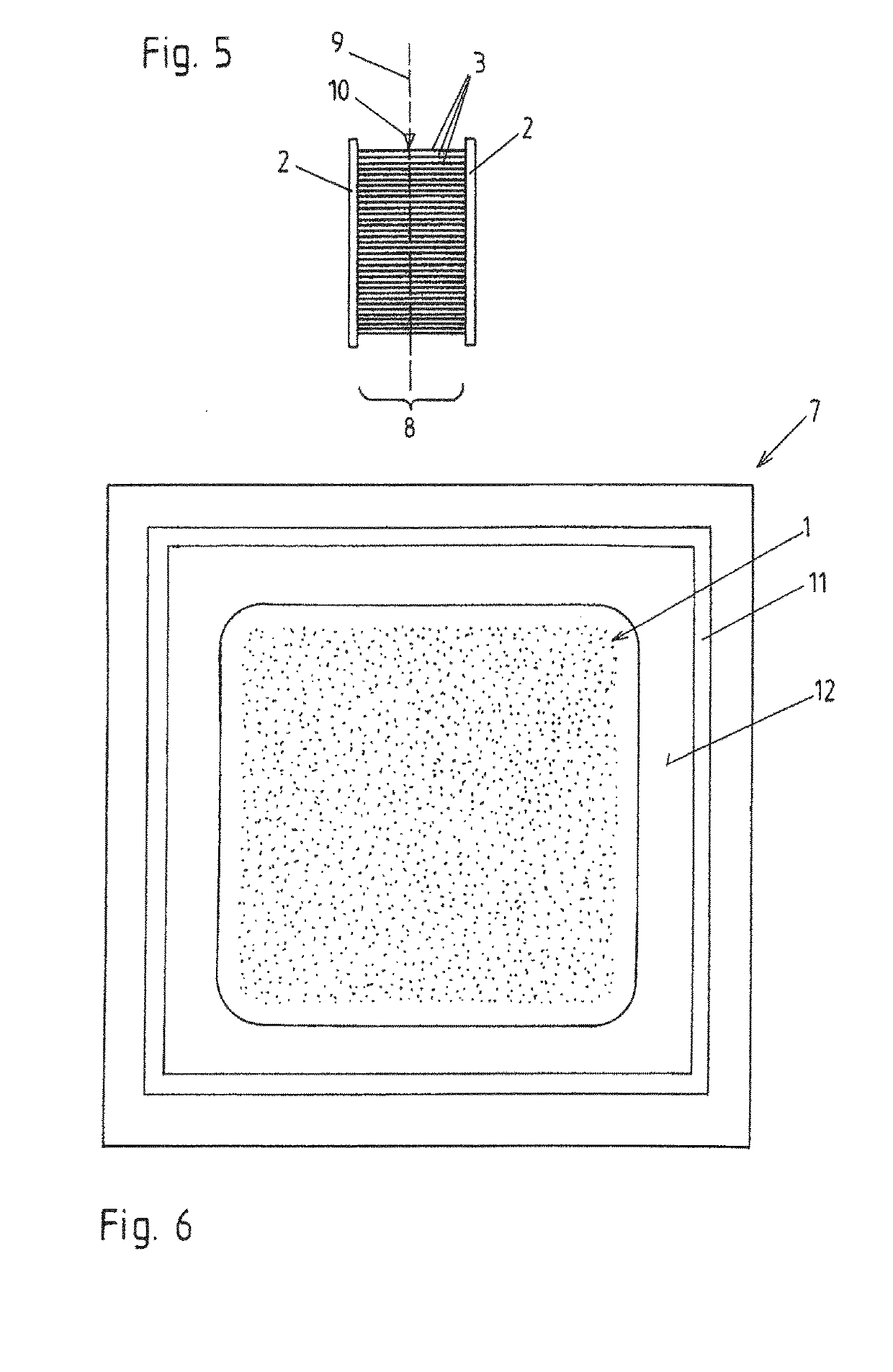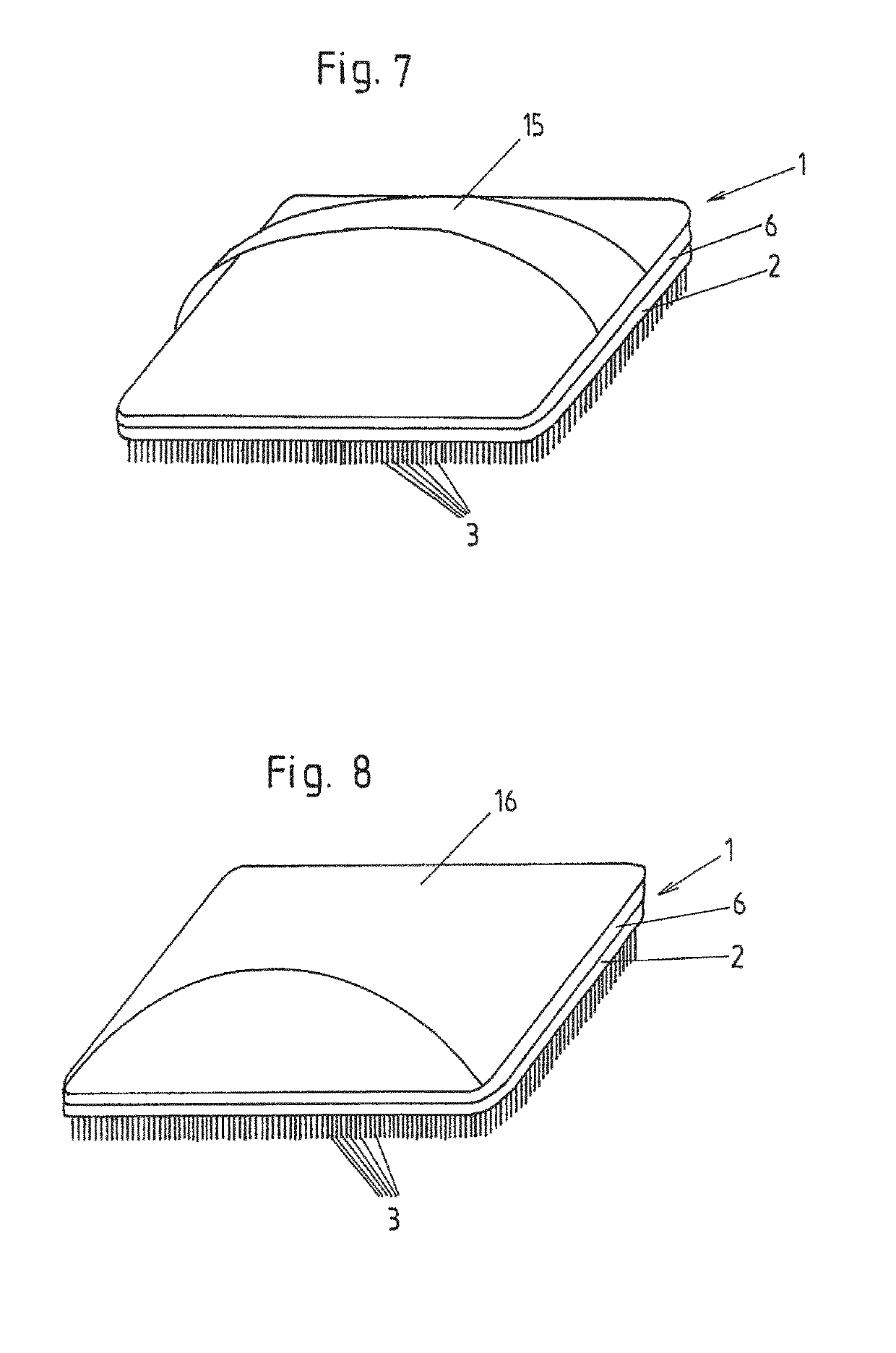Wound cleaning assembly
a technology for cleaning and wounds, applied in the field of wound cleaning assembly, can solve the problems of insufficient fulfillment of the goal, insufficient use of the method and the prior art, and high cost and pain of the prior art, and achieve the goal of not reaching the extent desired
- Summary
- Abstract
- Description
- Claims
- Application Information
AI Technical Summary
Benefits of technology
Problems solved by technology
Method used
Image
Examples
Embodiment Construction
[0033]As discernible in a side view according to FIG. 1, the threads 3 are fastened at a carrier layer 2. They project laterally from the carrier layer 2 and are beneficially arranged so tightly next to each other that they form a type of pile. Even if the threads are shown extending linearly in the schematic illustration shown, it is ultimately a matter of their stiffness and / or elasticity to what extent the threads 3 actually project like bristles from the carrier layer 2, as shown here. Even in the unstressed state, shown here, it is not mandatory for all fibers 3 to project linearly from the carrier layer 2 in the longitudinal direction. In any case, their elasticity shall be embodied such that they bend appropriately, as soon as the wound cleansing cloth is pressed against the wound. The hardness and / or pliability of the threads may be adjusted as desired by their thickness and the material used. Preferably used threads 3 comprise from 0.5 to 20 D-Tex (1 D-Tex=1 g / 10000 m). Par...
PUM
 Login to View More
Login to View More Abstract
Description
Claims
Application Information
 Login to View More
Login to View More - R&D
- Intellectual Property
- Life Sciences
- Materials
- Tech Scout
- Unparalleled Data Quality
- Higher Quality Content
- 60% Fewer Hallucinations
Browse by: Latest US Patents, China's latest patents, Technical Efficacy Thesaurus, Application Domain, Technology Topic, Popular Technical Reports.
© 2025 PatSnap. All rights reserved.Legal|Privacy policy|Modern Slavery Act Transparency Statement|Sitemap|About US| Contact US: help@patsnap.com



